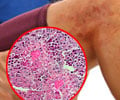Puerto Rican children with asthma make more clinic visits than African-American children with similar disease severity.
Asthma has been on the rise for the past two decades, and minority populations have an especially high prevalence. A study in the August issue of the journal Chest suggests that Puerto Rican children with asthma make more clinic visits than African-American children with similar disease severity, but that the latter spend more time in the hospital for asthma. The finding may reflect cultural differences in perceptions of medical care and how it is used, says lead investigator Robyn Cohen, MD, a pulmonary attending physician at Children’s Hospital Boston.Cohen, who does research in Children’s Division of Respiratory Diseases and in Brigham and Women’s Hospital’s Channing Laboratory, analyzed data from more than 6,500 children from inner-city Hartford who were screened for asthma. All the children were on Medicaid or S-CHIP (a Connecticut state-funded health insurance program), indicating similar low-income status. Overall, more than 2,900 children (45 percent) were diagnosed with asthma.
The Puerto Rican children had more severe asthma than the African-American children, but after adjustment for disease severity and for asthma risk factors, like exposure to cockroaches and tobacco smoke, they still made almost 30 percent more outpatient clinic visits for asthma. However, the African-American children spent three times more days in the hospital.
The reasons for these differences need further study, Cohen says. “The Puerto Rican children had greater asthma severity, so it was interesting that the African American children ended up spending more days in the hospital,” she says. “Is that because Puerto Rican children get more care early in their illness? Are we not reaching out enough to make all families feel comfortable coming to the clinic? Are we not teaching families to recognize symptoms? We don’t know.”
Many studies have compared asthma care between whites and African Americans, but relatively few have looked at Hispanics and even fewer have looked at Puerto Rican children specifically. “Hispanics are usually reported as one mixed group, although there are substantial differences in asthma outcomes between Puerto Ricans and Mexican Americans, for example,” Cohen says. “Furthermore, grouping socioeconomically disadvantaged kids together doesn’t necessarily teach us that much about the children we’re seeing in the clinic.”
Elizabeth Woods, MD, director of the Children’s Hospital Boston Community Asthma Initiative, who was not involved in the study, speculates that families’ willingness to take medications preventively, a cornerstone of good asthma treatment, may be influenced by cultural factors. Overall, only 18 percent of the children classified as having persistent asthma filled prescriptions for preventive medications, such as inhaled steroids, but Puerto Rican families were more likely than African American families to fill them.
Advertisement
(Source: Newswise)











